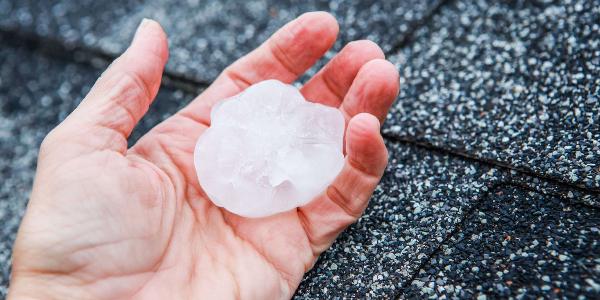UP TO THE MINUTE
Preparing Your Structure to Outlast Florida Hurricanes

By Metal Sales.
The roofing professionals from Metal Sales share how to rebuild after a hurricane and how to prepare for the next hurricane.
Editor’s note: Share this article with your customers to prepare them for the next hurricane season!
Hurricanes can do a tremendous amount of damage to residential, commercial and agricultural buildings, especially when it comes to roof damage. As homeowners work to rebuild after the devastation of past hurricanes, there are many things building owners can do to repair quicker and prepare for future hurricanes, according to this guide from the professionals at Metal Sales.
How to rebuild after a hurricane
If you’re in the same boat as the thousands of homeowners who are looking at roof replacement options after the storms earlier this season, now is the time to consider the full range of options available on the market.
There’s a lot more than the traditional asphalt shingle options that have served as the go-to option for homes over the past century. And some of those options, like metal roofing, prove to be more durable compared to traditional shingle roofs.
Take a moment to consider how vulnerable beach front homes are during a hurricane. Despite the proximity to the coastline, the home weathered the storm intact thanks to the durability of the metal roof which provided essential protection for the entire structure.
A metal roof can often withstand heavy winds in excess of 140 miles per hour, making this material an easy choice for homeowners that don’t want to repeat the roof replacement process any time soon.
While the UL ratings on some asphalt shingle products can reach comparable performance in high winds, most are rated much lower–at 60 miles per hour.
What you need to know about hurricane-proof roofing
When it comes to withstanding a category 5 hurricane, you need to understand how and where a metal roof is likely to fail. Here are the most common weaknesses:
- Poor engineering
- Faulty installation
- Uplift from high winds
- Water infiltration (wind-driven rain)
- Damage from flying debris
The first two common points of failure are simple to avoid. Partner with a reputable roofing company that can provide industry-leading materials to avoid poor engineering and certified installation to avoid mechanical failures.
Additionally, pay close attention to UL ratings to choose a material that will withstand uplift from high winds and water-resistance testing to ensure that even wind-driven rain is no match for the roof.
It pays to invest in good engineering from the ground up. After Hurricane Andrew devastated Miami-Dade County in 1992, building codes dictated that new constructions should withstand high winds up to 175 miles per hour. Although other parts of the state have been slower to adopt these standards.
Still, when a radiologist from Ohio built his dream home, he took note of the engineering behind each and every material selection. And when Hurricane Michael decimated miles of panhandle coastline in 2018, his home was the last one standing–still pristine amid all the destruction.
There’s a lesson to be learned here–fortifying your coastal home with quality engineering, like a metal roof, can be a make-or-break difference when a strong storm comes.
Choosing metal over shingles
Let’s take a closer look at how metal roofing compares to traditional asphalt shingles.
Durability
When it comes to providing strong material designed to withstand the impact of strong storm surges, including wind, hail and heavy rain – metal roofing is the easy choice. Most metal roofs are constructed from steel with a zinc coating that provides a self-healing effect.
Metal roofs that sustain minor damage during big storms will likely remain intact and continue to perform the job they’re designed for while shingle roofs are more susceptible to damage, leaving broken and missing shingles behind.
By comparison, another home in the same area with a metal roof shows no visible signs of damage.
Sustainability
If choosing an environmentally friendly option is high on the list of priorities, consider which roofing options can help you meet those goals. Asphalt shingles are made from petroleum-based products, contributing to carbon dependence. Plus, they’re destined for the landfill after a relatively short lifespan. By comparison, metal roofs are made from recycled materials. They last longer and when they’re decommissioned, the materials can be recycled again.
Weather resistance
What really matters is how well the new roof will hold up the next time a category 5 hurricane makes landfall. This is the moment of truth where metal roofs stand out. Roofing materials, including underlayment, fasteners and other components are assessed for wind resistance using a UL rating. The lowest rating on the scale sets the bar at 60 miles per hour–or a typical strong storm.
However, that’s no match for a hurricane like the one that recently impacted Fort Myers, Florida and caused extensive damage and flooding throughout Central Florida. If you live in a coastal state with a high risk of hurricanes, you need to go much higher on the UL rating system. You need maximum protection provided by a metal roof with the highest UL rating available.
The bottom line on hurricane-safe roofing
Nobody wants to be in the boat of having to rebuild their home. But if that’s the hand that life has dealt, consider this an opportunity to reassess your options. Choosing a metal roof when you rebuild provides your new and improved Florida home with the strength and durability that you need to weather the next storm. Metal Sales can provide a range of modern building material options to help you achieve your goals with the highest UL ratings.
Original article source: Metal Sales
Learn more about Metal Sales in their Coffee Shop Directory or visit www.metalsales.us.com.




















Comments
Leave a Reply
Have an account? Login to leave a comment!
Sign In